When I first spotted the RS Gravel bike at Eurobike, it was the combination of the striking lines of the titanium lugs, slim carbon tubes, and massive tire clearance that drew me in. Then I noticed the wild one-piece handlebar/stem/aerobar/light setup. At the time, there was no one around to ask any questions, but there was a QR code on the wall, so I scanned it and then read about something even more surprising – this bike has a tuned mass damper (TMD) in the fork (technically two, one in each leg)
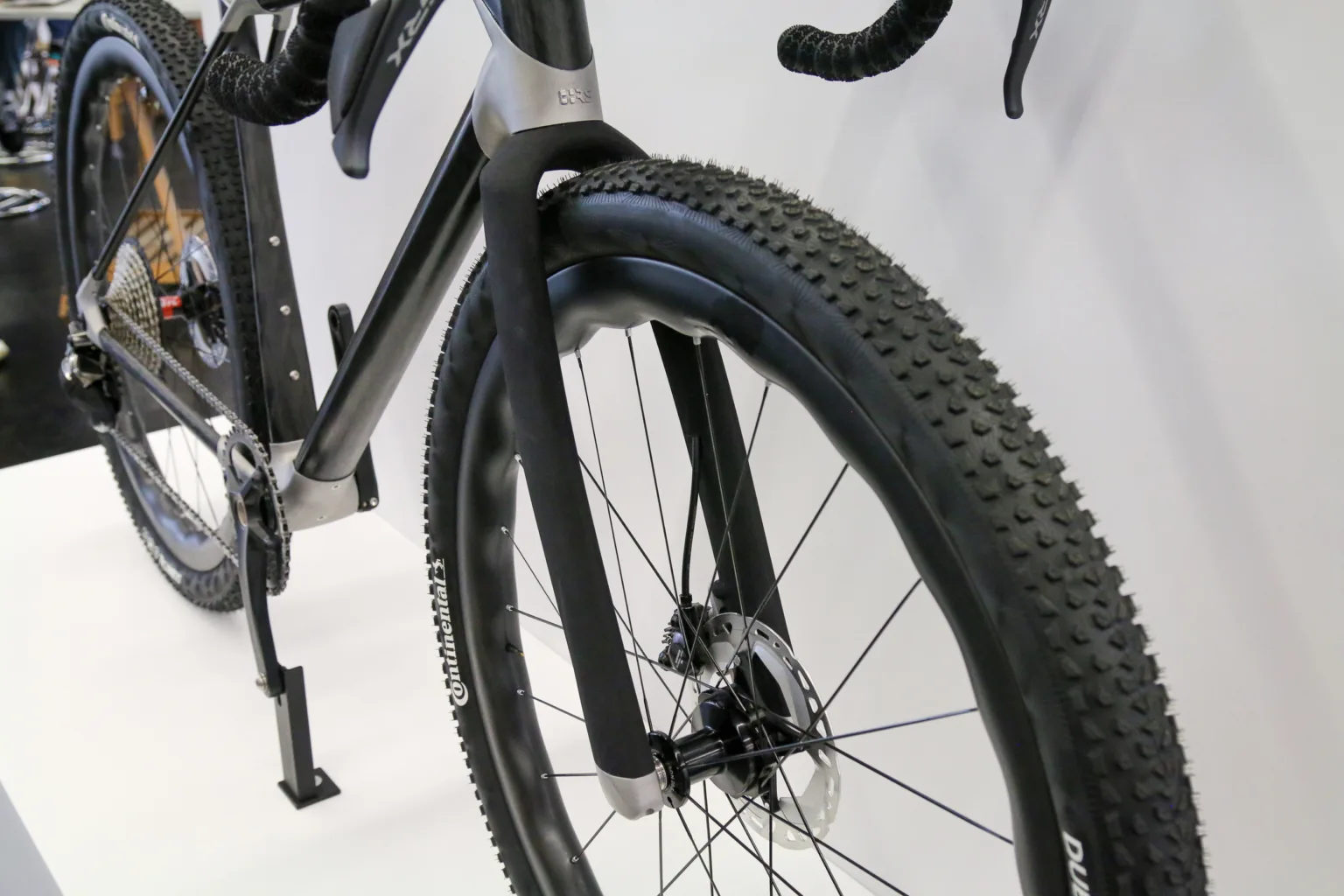
Just what is a TMD? Essentially a weight suspended between two springs, TMDs are used to damp vibrations or unwanted movement. On a large scale, they can be used to counter movement from skyscrapers like the massive Taipei 101 tower. On a smaller scale, they’re attracting the cycling world as a way to counter vibrations and road/trail buzz before they can reach the rider. We’ve seen more interest in the MTB world lately from brands like Rimpact, but it’s not surprising that the gravel world would at least be curious as well.
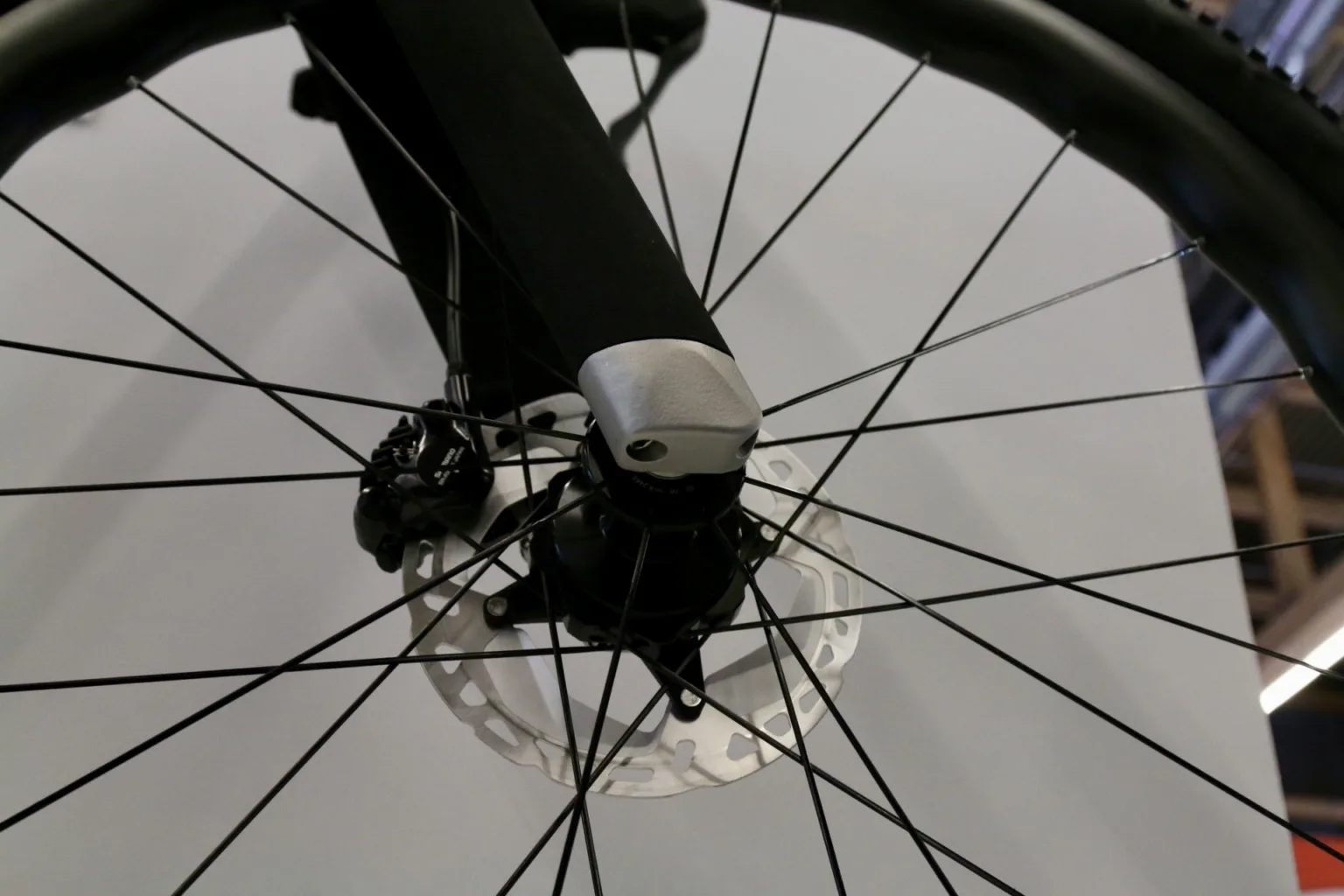



Later in the show, I got a chance to talk to Rolf Singenberger, who is the namesake for RS-Development. Rolf is probably best known for his 14 years with BMC, but he and a small team have been busy the past 11 years working with clients for RS-Development.
Rolf showed us the TMD cartridge that will be stashed inside each fork leg. The system adds just 200-250g of weight to the bike, and it can even be removed if you’re riding purely pavement. It’s also claimed to need zero maintenance, and doesn’t require any power to work.
There will also be the ability to tune the TMD to rider weight, with cartridges being easily swapped after removing a cap on the fork leg with two Allen bolts.

The bike does have a power source, however, as there is integrated lighting in both the handlebar and the seat stays. At the seat stays, Supernova rear lights are cleanly integrated into the 3D-printed titanium lugs.


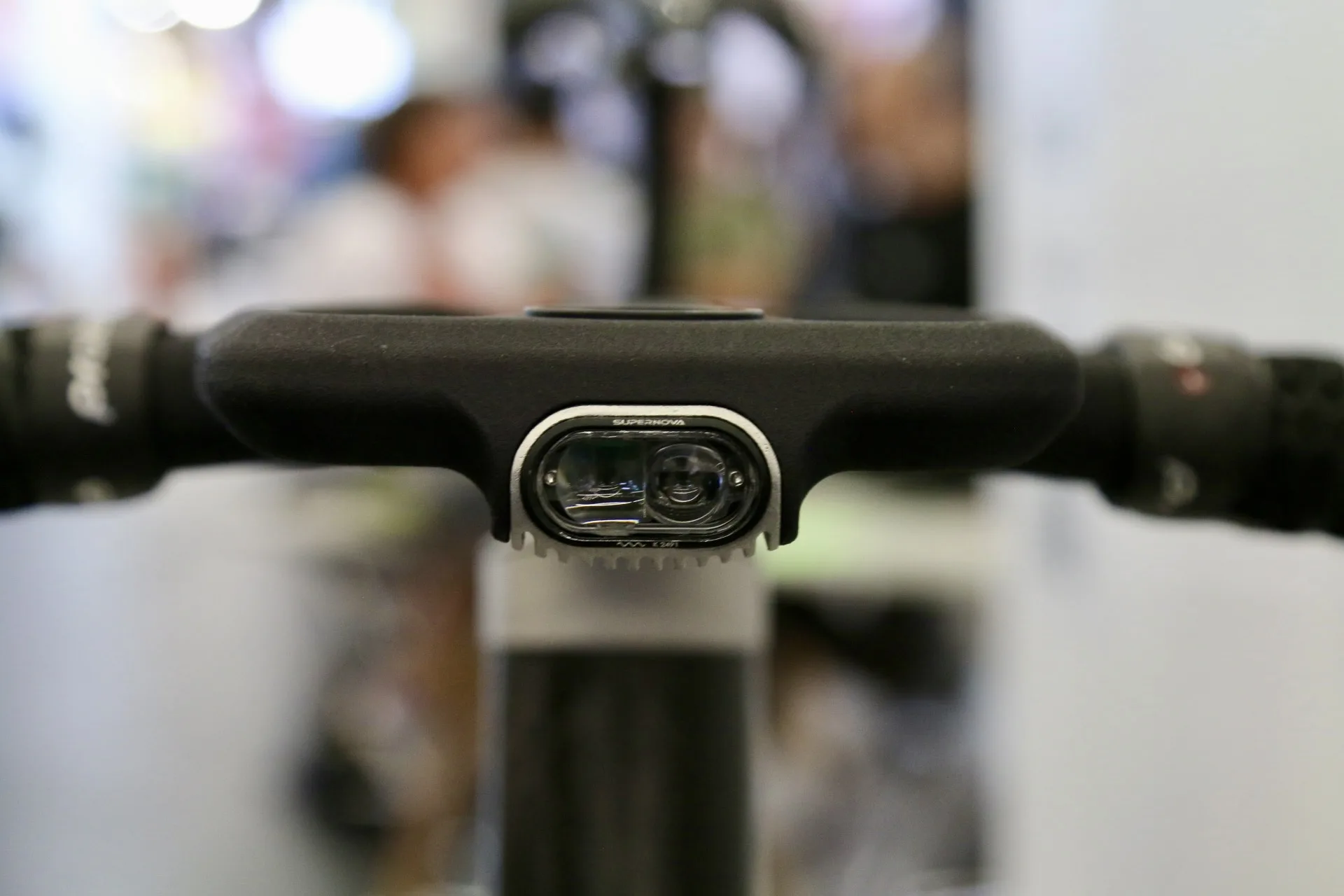
Lighting is found up front as well, with this crazy handlebar concept. Equipped with two mounts, the bar is big enough to run a full-size phone on the lower mount, plus a full-size bike computer on the upper mount.
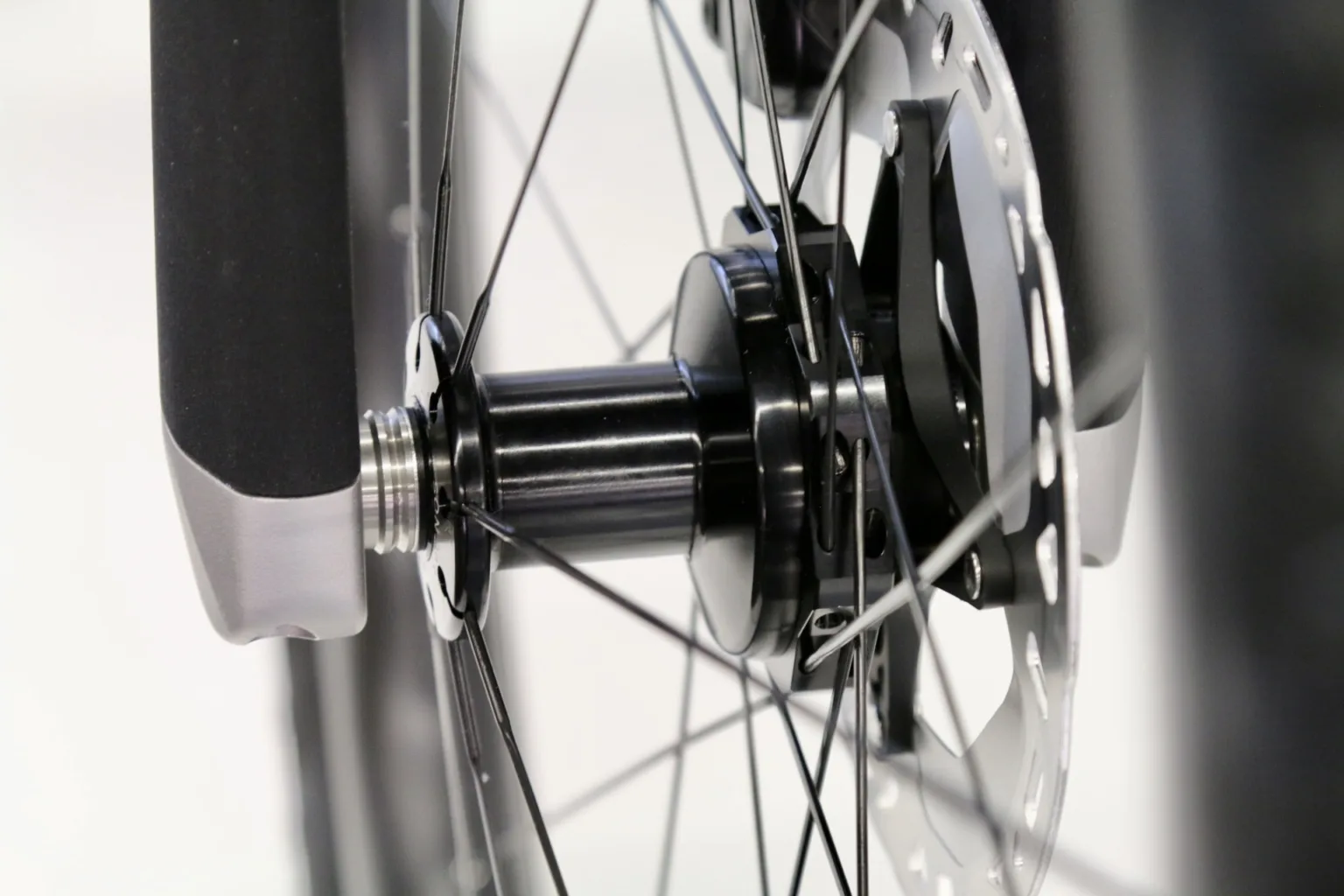

There is also a dynamo hub up front with a self-contacting system to power both the lights as you ride. And not just the lights, there is an integrated USB to power all those electronics on the bar as well.
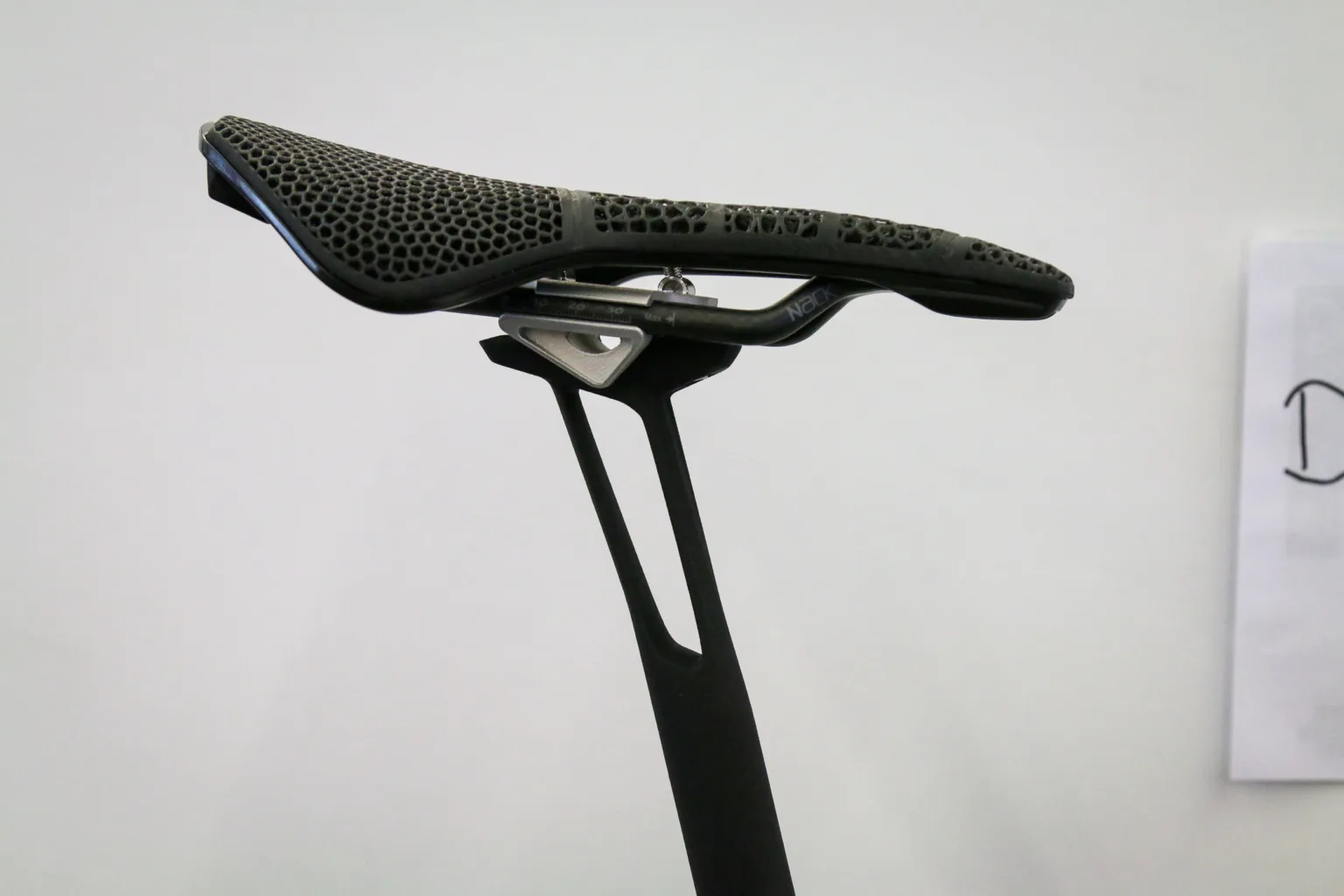
In addition to the TMD, the frame has been engineered to flex between the rear dropouts and the seat post, to further add compliance.

The Swiss-designed prototype frame itself was created in partnership with German carbon specialists, MEBCarbon. It combines 3D-printed titanium lugs (aluminum is also apparently an option) with custom-wrapped carbon tubing, and is engineered and assembled in Germany. According to Rolf, the manufacturing process is all automated to allow for repeatable and consistent results, and the parametric design and geometry are created in a way that they can be tailored to almost any size for the same cost.
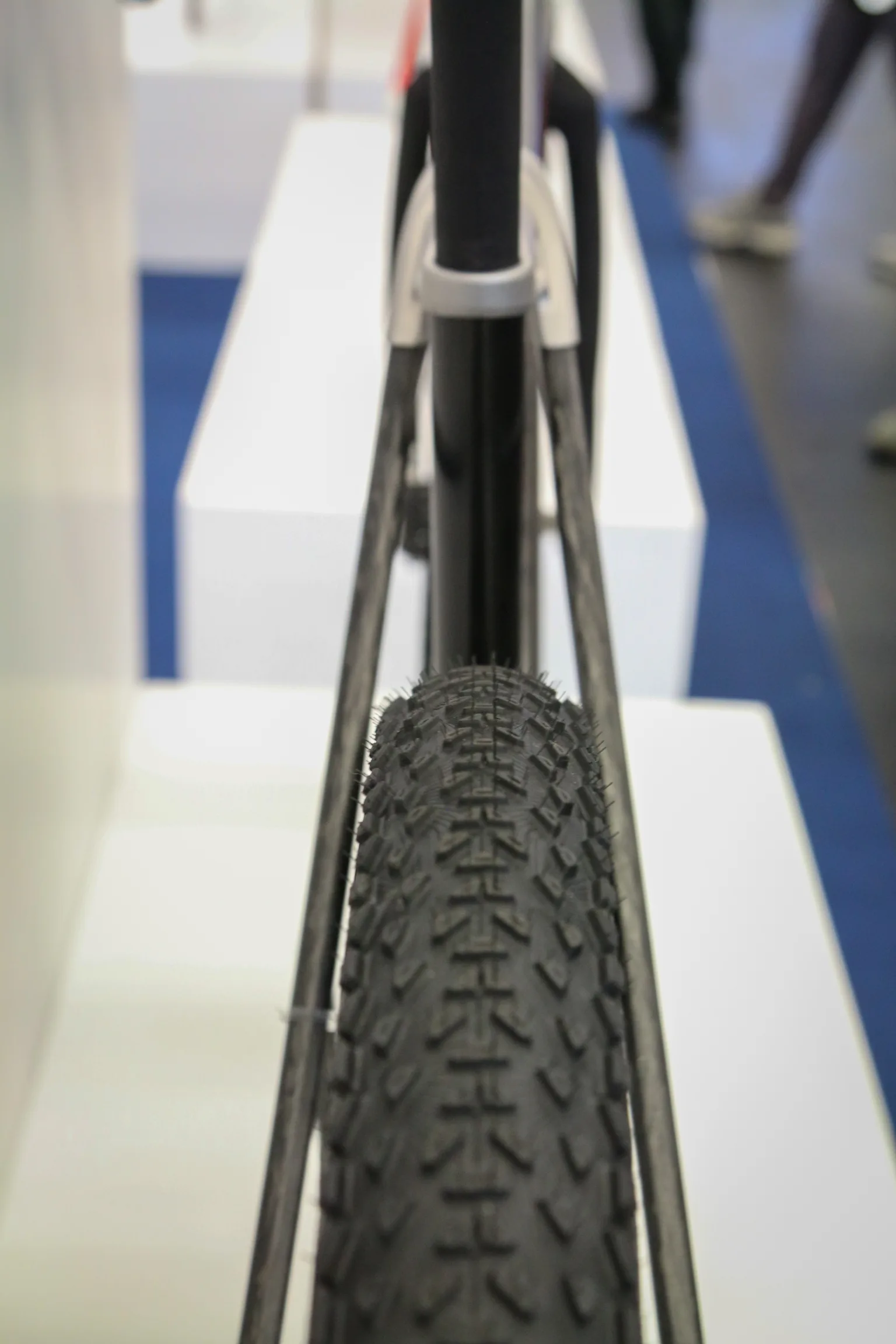
Even with the wide fork legs and integrated lighting, the frame and fork have clearance for massive 700c x 55mm tires. Between that and the TMD, this seems like it could offer an impressively smooth ride.
When will the RS Gravel bike be available?
Unfortunately, this bike is not headed to production any time soon. The project was to showcase the abilities of RS-Development and hopefully fine partners in the industry to bring it to market. From the sounds of things, Rolf is already fielding plenty of interest and not just for gravel – there has been interest in the triathlon world as well.
To us, it seems that with a design this intriguing, it can’t be long until we see similar options available for sale.
